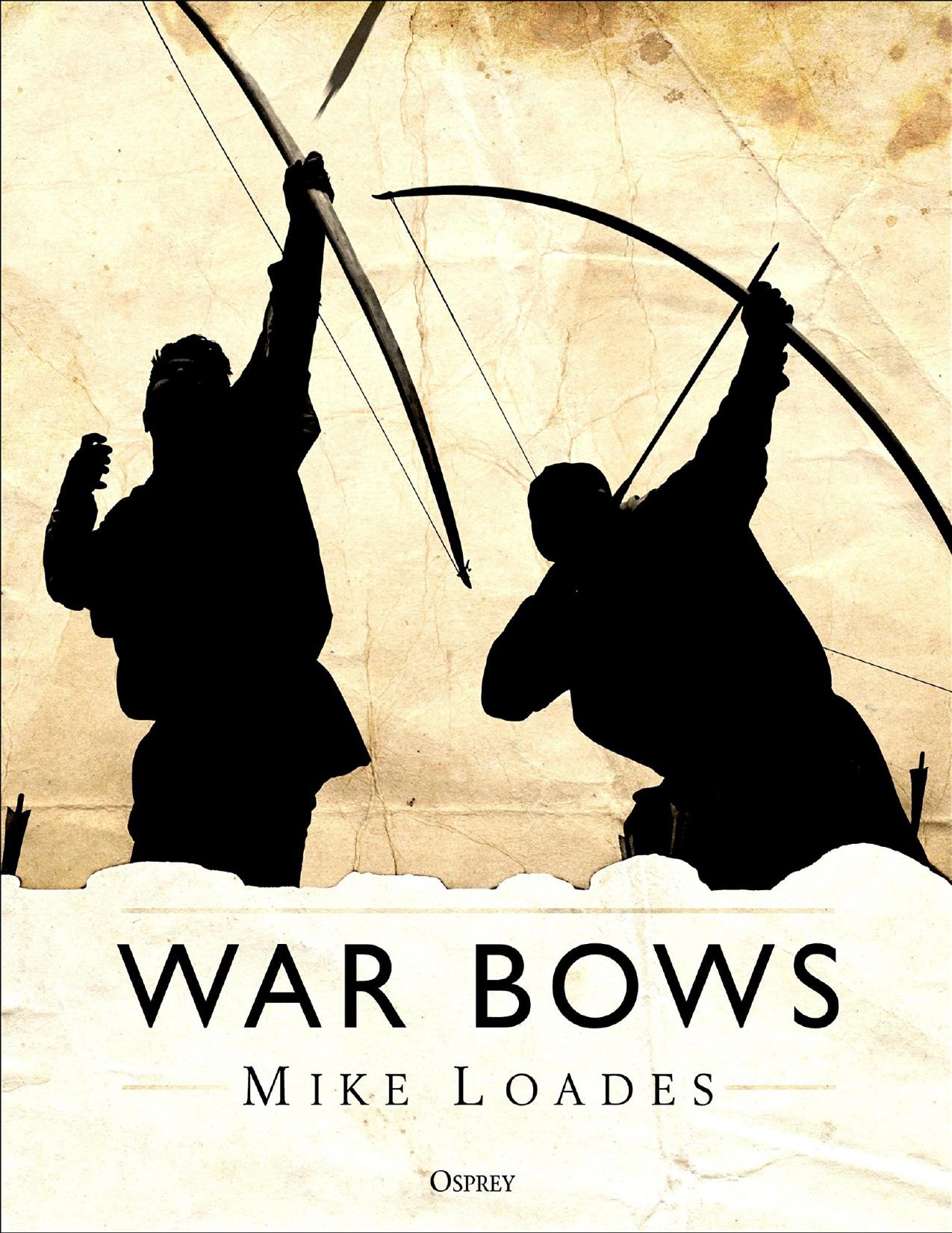War Bows: Longbow, Crossbow, Composite Bow and Japanese Yumi (Osprey General Military) by Mike Loades

Author:Mike Loades [Loades, Mike]
Language: eng
Format: epub, pdf
ISBN: 9781472825537
Google: 0IuCDwAAQBAJ
Amazon: 1472825535
Publisher: Osprey Publishing
Published: 2019-02-18T21:00:00+00:00
DEVELOPMENT: ENGINEERING THE OPTIMAL BOW
Geometry
There are two essential elements to a composite bow â the geometry and the materials. To begin with the geometry: bow-limbs that bend away from the archer are known as reflex and those that bend towards the archer are known as deflex. A combination of reflex and deflex is called a recurve. Composite bows appear in a variety of forms but they are all, to a greater or lesser extent, recurve bows. There is a trade-off of benefits between reflex and deflex, and the search for the perfect bow led to an extraordinary diversity in bow designs.
One distinct advantage of a recurve bow is that the design, combined with the powerfully elastic properties of the materials, induces the limbs to return with an accelerating velocity; this in turn transfers into arrow speed. To deliver an equivalent performance with a non-recurve self-bow would require a heavier draw-weight. Secondly, a recurve design requires less work from the archer to draw the bow to its full extent. When drawing a bow, the ends of the bow (the kasan and bash sections and, where present, the siyahs) do not bend, but rather act as levers. With a relatively straight-limbed bow such as the longbow, for example, there comes a point where the tips pass an optimal angle and no longer offer mechanical advantage to bending the limbs. At this point the archer perceives an increase in the effort required to draw the bow, a phenomenon known as stacking. It feels harder to pull, yet there has been no actual increase in either power or draw-weight. Once the tips cease to act as levers, the archer is in effect trying to stretch the limbs rather than to bend them. By changing the angle of the energy transfer, the recurve limbs of a composite bow, acting like crowbars, permit the archer to draw a bow of comparable draw-weight for significantly less muscular exertion.
Download
War Bows: Longbow, Crossbow, Composite Bow and Japanese Yumi (Osprey General Military) by Mike Loades.pdf
This site does not store any files on its server. We only index and link to content provided by other sites. Please contact the content providers to delete copyright contents if any and email us, we'll remove relevant links or contents immediately.
Shoe Dog by Phil Knight(4163)
The Rules Do Not Apply by Ariel Levy(3905)
Walking by Henry David Thoreau(3234)
Running Barefoot by Amy Harmon(3056)
Crazy Is My Superpower by A.J. Mendez Brooks(2859)
How to Read Water: Clues and Patterns from Puddles to the Sea (Natural Navigation) by Tristan Gooley(2852)
I'll Give You the Sun by Jandy Nelson(2842)
How to Read Nature by Tristan Gooley(2664)
How Music Works by David Byrne(2524)
The Boy, the Mole, the Fox and the Horse by Charlie Mackesy(2446)
Seducing Cinderella by Gina L. Maxwell(2234)
Cuba by Lonely Planet(2184)
The Fight by Norman Mailer(2158)
Going Long by Editors of Runner's World(1920)
Accepted by Pat Patterson(1917)
The Unfettered Mind: Writings from a Zen Master to a Master Swordsman by Takuan Soho(1859)
The Happy Runner by David Roche(1819)
Backpacker the Complete Guide to Backpacking by Backpacker Magazine(1815)
Trail Magic by Trevelyan Quest Edwards & Hazel Edwards(1760)
